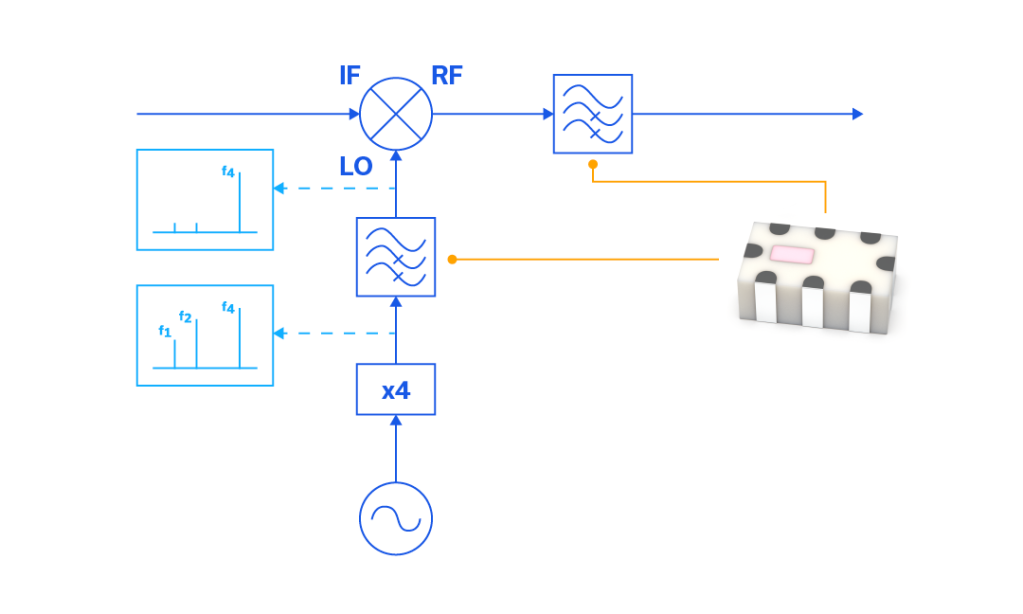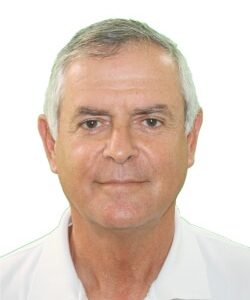LTCC High Pass Filters for mmWave

When designing mmWave frequency systems that span Q-band and half of V-band, engineers are often faced with difficult tradeoffs when it comes to filter selection. Mini-Circuits has broken through with our HFCQ (1008), HFCN (1206) and HFCV (1210) series high pass filters. These latest LTCC filters from Mini-Circuits exhibit passbands that cover Q-band and the lower half of V-band while offering a combination of insertion loss, return loss, rejection, size, cost, repeatability, ruggedness and reliability that has only now become available. The Q and V-band LTCC high pass filter selection trade space just became easier for the designer. This trend impacts the choice of filter technology for up- and down-converter designs within the Q/V-band range. This breakthrough by Mini-Circuits extends the bandwidth of SMT filter technology, enabling our customers to cover their filter blocks by traditional versus exotic means.
Customers are now able to design up- and down-converters with filters that offer high levels of performance in compact and cost-effective packages as small as 1008.
Spectral Deficiency
When spectrum is scarce and the demand for data throughput/bandwidth is high, it is natural to look to higher, underutilized frequencies. At least two industries are looking to the Q and V bands, commercial wireless and satellite communications. For commercial wireless carriers, Q-band is where 5G FR2 bands n259 and n260 reside (see Table 1), although they are officially in Ka and V-bands, respectively. Q-band also includes the downlink frequency range for modern-day satellite communications (see Table 1).

The Mini-Circuits Advantage
In the block diagram shown in Figure 1, two distinct Mini-Circuits’ high pass filters perform different functions altogether. The HFCQ-2902+ attenuates the fundamental and the second harmonic for a x4 multiplier, and provides the clean, fourth harmonic to the mixer at the LO port. The HFCQ-3652+ provides attenuation of any IF and LO leakage, and filters out any mixer spurs that are below the RF output band. Note the frequencies are given in the rightmost column of Table 1 for each of the three notional upconverters.

The HFCQ-2902+ and HFCQ-3652+ high pass filters are provided in our NL1008C-6 package, which measures just 2.5 x 2.0 x 0.705mm. The footprint is exactly 5mm^2. The equivalent suspended substrate stripline (SSS) solution would measure at least 8.0 x 4.0 mm for the board, or a footprint of 32mm^2. A printed, thin-film version, if etching tolerances would even permit such a structure, would be even larger in size. A footprint that is six times larger than the LTCC solution is untenable in many applications, particularly on board a satellite.
The HFCQ-2902+ and HFCQ-3652+ high pass filters are highly repeatable and well-suited to volume production whereas the performance of the SSS or printed versions of these filters never seem to be consistent enough for high volume production. When the ruggedness of the filter component is considered, and reliability calculations are performed, the Mini-Circuits’ LTCC version proves more robust and reliable than a suspended stripline or thin film version, hands down.
The HFCQ-2902+ and HFCQ-3652+, as well as other members of this product family are often an order of magnitude more economical than suspended substrate stripline solutions. Additionally, it is far easier to mount the HFCQ-2902+ and HFCQ-3652+ to the host circuit board than it is a competing suspended stripline or thin-film solution. SSS interfaces are known to be far more challenging to launch to mother board than the equivalent LTCC pads are to reflow. Even thin-film filters can be detuned due to grounding effects such as voids, and due to solder wicking up any traces or vias in the assembly process. Consistency, repeatability and ease of assembly are best achieved through the use of small, traditional LTCC packages, long the gold standard for these metrics.
Good Things, Small Packages
In this article we’ve described how Mini-Circuits has achieved breakthrough performance with our HFCQ (1008), HFCN (1206) and HFCV (1210) series high pass filters in terms of bandwidth, insertion loss, return loss and rejection. While the electrical parameters set a new standard for traditional LTCC filters, so do metrics like cost-effectiveness, repeatability, ruggedness and reliability compared to competing technologies. These latest LTCC filters from Mini-Circuits exhibit passbands that cover Q-band and the lower half of V-band up to 58 GHz and beyond. A block diagram was provided to demonstrate how their performance is envisioned; a simplified upconverter stage that can apply to 5G or satellite communications. We discuss the reliability, consistency, repeatability and ease of assembly of the new high pass filters from Mini-Circuits. When you find yourself pushing the Q/V-band frequency envelope with little space left and no time miss a filter performance metric, check out Mini-Circuits’ latest LTCC high pass filter offerings, you should be impressed with what you find.











